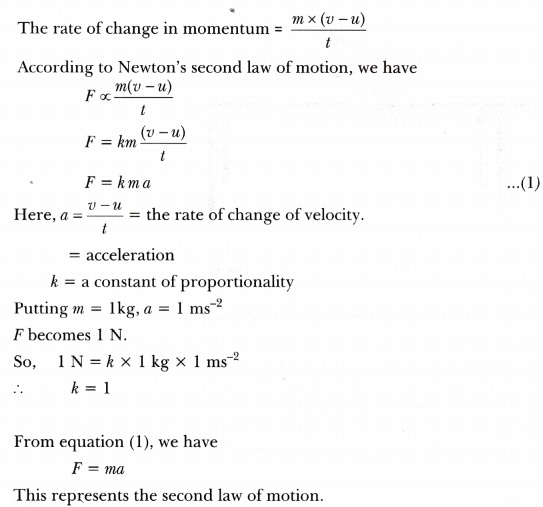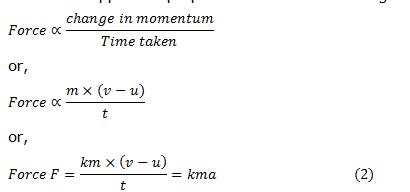Derivation of conservation of momentum consider two colliding particles a and b whose masses are m1 and m2 with initial and final velocities as u 1 and v 1 of a and u 2 and v 2 of b.
State newton s 2nd law of motion and derive an expression of force using the law.
The 2nd law of motion states that the force acting on the body is equal to the product of its mass and acceleration.
Newton s second law states that the acceleration of an object depends upon two variables the net force acting on the object and the mass of the object.
In other words the state of motion of a body changes only on application of a net non zero force.
A force of 5 n produces an acceleration of 8 ms 2 on a mass m 1 and an acceleration of 24 ms 2 on a mass m z what acceleration would the same provide if both the masses are tied together.
Derive the unit of force using the second law of motion.
It is also called the.
The second law of motion describes what happens to the massive body when acted upon by an external force.
Before understanding the equation of newton s second law of motion which deals with force mass and acceleration of an object let s have a look upon the three laws of motion.
The acceleration of an object as produced by a net force is directly proportional to the magnitude of the net force in the same direction as the net force and inversely proportional to the mass of the object.
Defining newton s second law of motion.
Impulse momentum theorem derivation.
Newton s second law of motion states that the rate of change of momentum of an object or a system is proportional to the net force applied on that object or the system.
Consider a body of mass m moving with velocity v.
According to the newton s 2 nd law of motion the rate of change of linear momentum of a body is directly proportional to the applied external force and in the direction of force.
Newton s second law of motion.
The law of conservation of momentum is an important consequence of newton s third law of motion.
The three laws of motion.
Derivation of newton s first law of motion from newton s second law of motion newton s first law states that a body stays at rest if it is at rest and moves with a constant velocity if already moving until a net force is applied to it.
It means that the linear momentum will change faster when a bigger force is applied.
The second law of motion is more quantitative and is used extensively to calculate what happens in situations involving a force.
Newton s second law of motion can be formally stated as follows.
Mathematically it describes the causes and effects of force and changes in motion of an object.
Second law of motion formula.





.png)


















